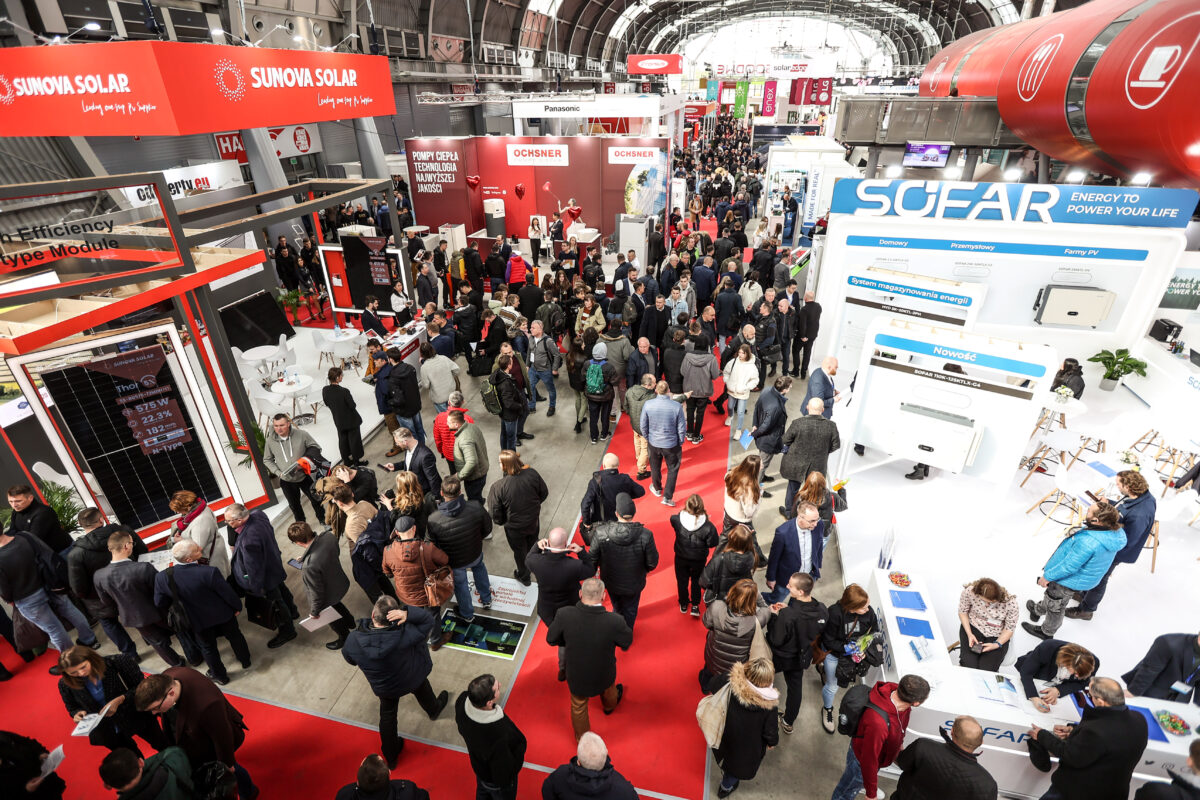The 2023 edition of the Enex Expo mirrored the robust growth the Polish solar sector has experienced in recent years. It attracted a healthy roll call of big manufacturers and local players, with inverter and heat pump producers taking center stage.
The event was held on March 8 and March 9 in Targi Kielce, around 200 kilometers south of Warsaw. It attracted 323 companies from 15 countries and 19,600 visitors, spreading across a surface of 33 096 m2. According to the organizers, it was a record-breaking edition, up from 190 exhibitors and 7868 visitors welcomed in 2022 on a surface of 15 550 square meters.
To the surprise of some exhibitors and attendees, last year’s changes in regulations for the distributed-generation PV segment failed to dampen the enthusiasm on the show’s floor.
Namely, Poland's residential rooftop PV sector underwent a profound change in spring last year when new provisions were introduced for PV “micro-installations” up to 50 kW in size. The new net billing system replaced the net metering scheme that was in force since 2016, jeopardizing what has been the country’s key PV deployment engine.
Mid last year, several important players in the Polish PV sector reported significant financial losses, and some installation companies have even gone bankrupt. Nonetheless, Poland managed to install 4.9 GW of solar PV in 2022, according to Solar Power Europe data, making it the third biggest market in Europe, after Germany and Spain.
“Almost 90% of PV installs in 2022 came from prosumers,” said Bogdan Szymanski, vice president of the Polish PV Association (SBF Polska PV).“This year, things will look a bit different.”
According to Szymanski, the market is expected to remain on the growth trajectory but with a shift from micro-installations to the utility-scale.
“This year, some 50% of new installs will come from prosumers,” he said. “Meanwhile, many 100 MW or 200 MW projects in the pipeline will come to fruition after they have emerged from years-long permitting procedures.”
The C&I PV market segment is also expected to make a considerable contribution to this year’s grand total.
“Last year, we witnessed the awakening of the C&I PV market segment in Poland,” said Maciej Borowiak, vice president of SBF Polska PV and cofounder of PV installation company Brewa. “The electricity prices were five time higher than four-five years ago with an average of PLZ 1,200 ($273)/MW and SMEs started to turn to PV as a shield against electricity price volatility.”
According to Borowiak, two or three years ago, there was no interest coming from the C&I market segment.
“Now, my company is preparing almost every day an offer for 1 MW or 2 MW projects and even up to 5 MW arrays and all these projects are planning a PPA business model,” he adds.
However, while PV system up to 50 kW need no permission, it usually takes around 12 months to get all necessary permits for bigger systems. Another headwind is the current regulation that applies to the PPA market.
“A maximum PPA price of around PLZ 350/MWh was fixed and it will stay effective for a year,” Szymanski said. “In other words, if you sell at a price which is higher than the one set in the auction plus PLZ 50, you need to pay the tax on all the amount earned above this price, and this is putting some investors off.”
While new regulation is expected in the PPA space as well as in regard to permits for construction of direct lines, the industry insiders believe that not much change will materialize this year due to the upcoming parliamentary elections.
Meanwhile, prospects are bright for heat pumps. Last year, Poland was the fastest growing heat pump market in Europe with a 130% sales growth year on year. According to local associations, no such jump is expected this year, but the installation pace will keep the momentum going.
Some of the leading heat pump providers – Panasonic, Mitsubishi Electric, and Daikin – told pv magazine at Enex Expo that they were caught off guard by the rapid rise in demand seen last year but that the current lead times have been reduced to around six months.
This content is protected by copyright and may not be reused. If you want to cooperate with us and would like to reuse some of our content, please contact: editors@pv-magazine.com.




By submitting this form you agree to pv magazine using your data for the purposes of publishing your comment.
Your personal data will only be disclosed or otherwise transmitted to third parties for the purposes of spam filtering or if this is necessary for technical maintenance of the website. Any other transfer to third parties will not take place unless this is justified on the basis of applicable data protection regulations or if pv magazine is legally obliged to do so.
You may revoke this consent at any time with effect for the future, in which case your personal data will be deleted immediately. Otherwise, your data will be deleted if pv magazine has processed your request or the purpose of data storage is fulfilled.
Further information on data privacy can be found in our Data Protection Policy.